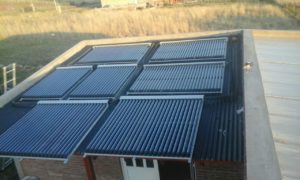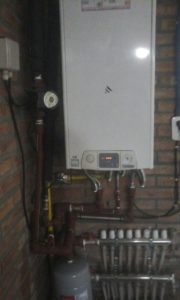There is a saying “for sample we need only a button”.
If you visit the Ministry of Electricity and Renewable Energy of Ecuador website you will see a section called “Flagship Projects”.
Lets make a bet. Of a total of 9 renewable projects, how many you think are of solar energy?
Given that we are talking about a country with one of the highest levels of solar radiation probably our response would be 1 or more.
The correct answer is zero.
Of the 9 total projects, 8 are hydroelectric and 1 is wind.
We can conclude that there is a strong rainfall dependence and a lack of renewable energy matrix diversification in Ecuador.

Being located in the middle of the planet, the potential use of solar energy in the country is huge and its extensive use would help achieve energy independence in the long run.
Leaving aside the dominance of hydropower, Ecuador has made progress in wind generation in various regions.
In Loja, the Villonaco Windfarm, located 2,720 m above sea level, has 11 turbines that generate 16.5 MW.
Renewable energies have been consolidated in Galapagos, with advanced projects in wind, photovoltaics and biofuels energy.
In 2007, three wind turbines were installed on San Cristobal island, to give it 2.4 MW. This wind park can cover 30% of island electricity demand.
Since 2005 operates a photovoltaic park in Floreana, which covers 30% of the electrical energy required.
There is a wind park in Baltra with 2.1 MW capacity.
In solar energy, low activity remained thanks to agreements with German government.
Since 2004, the German Energy Agency launched the Solar Roofs Program to promote renewable energy pilot projects in regions of high solar radiation.
The Government developed photovoltaic projects in 8 Gulf of Guayaquil municipalities. The Eurosolar Program gives electricity to 91 isolated communities with support from the European Union.

For solar energy development a law that favored investors was created, but it didn´t work because there´s no financial guarantee for such investments.
The current renewable energies regulation in Ecuador is still quite poor.
It is difficult to develop big projects in the country, so that distributed generation using photovoltaic systems connected to the electricity grid should be promoted.
But it happens that there is no regulation for these systems which discharge energy to the national grid, no values to remunerate people who bring energy are set and, on the contrary, the excess energy being poured it is also charged.
Wind resource is scarce in the tropical region where the country is located as there are no significant winds and in the evening these winds are practically nonexistent.
Ecuador should take advantage of geothermal energy taking into account the geological conditions of the country, but develop this energy involves making very expensive studies.
Ecuador’s location is optimal for solar energy harnessing.
There is another saying “God gives bread to those who have no teeth.”
Solar business and projects in Latam with Sopelia




















